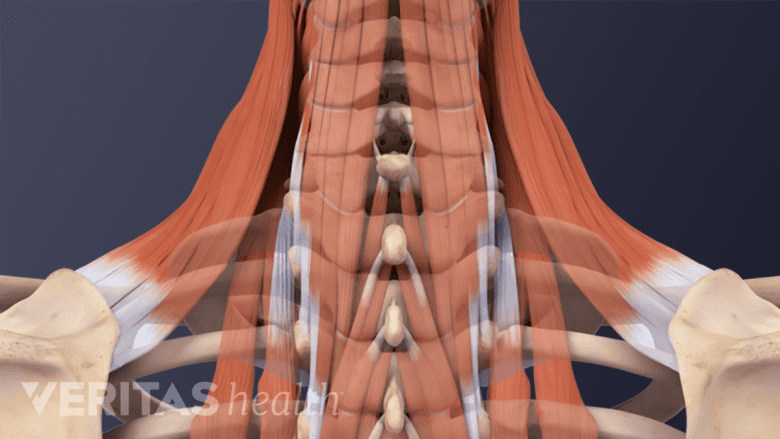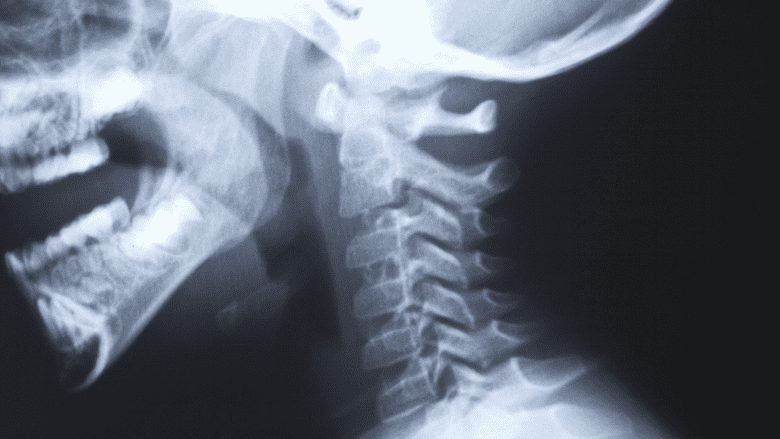The diagnosis of cervicogenic headache (CGH) involves evaluation of medical history, manual examination techniques, and/or diagnostic nerve blocks. Many other conditions can mimic CGH, so getting an accurate diagnosis is important in order to set up a safe and effective treatment plan.
In This Article:
Patient History and Physical Examination

A physical exam for CGH includes checking for tenderness, swelling, or other abnormalities in the neck.
The first step in diagnosing CGH requires a doctor visit, which includes:
- Patient history. The doctor asks about when the current symptoms started, how they feel,
- Type and nature of pain
- Onset of pain characteristics and other symptoms
- Reduced flexibility of neck
- Evidence of trauma or injuries to the cervical region
- Physical examination. The doctor observes and palpates the neck, checking for tenderness, swelling, or other abnormalities. In addition to examining the neck’s range of motion, the doctor may also perform exams on the arms and hands to check for any deficits in strength, sensation, or reflexes, which could indicate a nerve problem in the neck. The cervical flexion-rotation test (CFRT) is sometimes used to evaluate the severity of CGH. It involves the patient lying down and then bending the neck forward, and then rotating the head gently from left to right. If pain or resistance is experienced, it indicates limited rotation of the cervical spine.1Hall, T. M., Briffa, K., Hopper, D, Robinson, K. W. The Relationship between Cervicogenic Headache and Impairment Determined by the Flexion-Rotation Test. Journal of Manipulative and Physiological Therapeutics, 33(9), 666–671.,2Hall, T.M., Briffa, K., Hopper, D. et al. Comparative analysis and diagnostic accuracy of the cervical flexion–rotation test. J Headache Pain (2010) 11: 391.,3Rubio-Ochoa, J. Benítez-Martínez, E. Lluch, S. Santacruz-Zaragozá, P. Gómez-Contreras, C.E. Cook Physical examination tests for screening and diagnosis of cervicogenic headache: a systematic review. Man. Ther., 21 (2016), pp. 35-40.
If CGH is suspected based on the medical history and physical exam, advanced diagnostic techniques may be requested to further narrow down the possible causes of pain.
Advanced Diagnostic Procedures for CGH
Two common advanced diagnostics for CGH include:
Diagnostic nerve blocks

Nerve block injections are used to identify the origin of pain in the cervical spine.
Diagnostic nerve block injections are used to test the exact source of pain in the cervical spine. The technique involves injecting a pain-relieving anesthetic or anti-inflammatory solution around the nerve/joint. Medical imaging such as fluoroscopy (x-ray guidance) accompanied by contrast is used to guide the needle to the correct spot. Pain relief from these injections may be seen in all areas innervated by the nerve, including regions in the head.
See Selective Nerve Root Block Injections
Medical imaging

Occasionally, x-rays are used to help diagnose cervicogenic headaches.
Diagnostic imagery such as x-rays, computerized tomography (CT) scans, and magnetic resonance imaging (MRI) may only be used to support a diagnosis, but do not generally confirm the diagnosis in CGH. Cervical disc bulging as seen in these images may not always indicate the cause of CGH. This technique is more useful to identify causes such as tumors or birth defects.
Diagnosing CGH may be challenging in some cases because it not only resembles other headaches but can also trigger them, such as migraines and tension-type headaches.
2 Different Diagnostic Criteria for CGH

Reduced neck flexibility is an important factor in CGH diagnosis.
The Cervicogenic International Study Group (CGISG) and the International Headache Society – International Classification of Headache Disorders (IHS-ICHD) have outlined two different sets of diagnostic criteria to diagnose CGH.
The main criteria put forth by CGISG that is essential for CGH diagnosis include:
- Neck involvement characterized by:
- Pain triggered due to abnormal neck/head movement and/or application of external pressure over the cervical region
- Reduced flexibility of the neck
- Shoulder and arm pain on the same side
- Confirmation of pain source by diagnostic nerve block injections
- Side-locked pattern of pain
The CGISG criteria also mentions other factors that can be considered, such as moderate non-throbbing pain, blurriness of vision, sensitivity to light and sounds, nausea, dizziness, difficulty in swallowing, and increased risk among women.
See What Causes Neck Pain and Dizziness?
While the CGISG criteria is mostly based on what the patient experiences or what can be gathered from a physical exam, the IHS-ICHD criteria goes a step further and requires confirmation of a neck lesion that is causing the pain. Following the IHS-ICHD criteria in the clinical setting is more difficult because it is possible to have CGH without a confirmatory lesion in the neck as presented in diagnostic tests. Also, CGH can occur without accompanying neck pain, wherein only tender spots may be present in the neck region.
- 1 Hall, T. M., Briffa, K., Hopper, D, Robinson, K. W. The Relationship between Cervicogenic Headache and Impairment Determined by the Flexion-Rotation Test. Journal of Manipulative and Physiological Therapeutics, 33(9), 666–671.
- 2 Hall, T.M., Briffa, K., Hopper, D. et al. Comparative analysis and diagnostic accuracy of the cervical flexion–rotation test. J Headache Pain (2010) 11: 391.
- 3 Rubio-Ochoa, J. Benítez-Martínez, E. Lluch, S. Santacruz-Zaragozá, P. Gómez-Contreras, C.E. Cook Physical examination tests for screening and diagnosis of cervicogenic headache: a systematic review. Man. Ther., 21 (2016), pp. 35-40.

